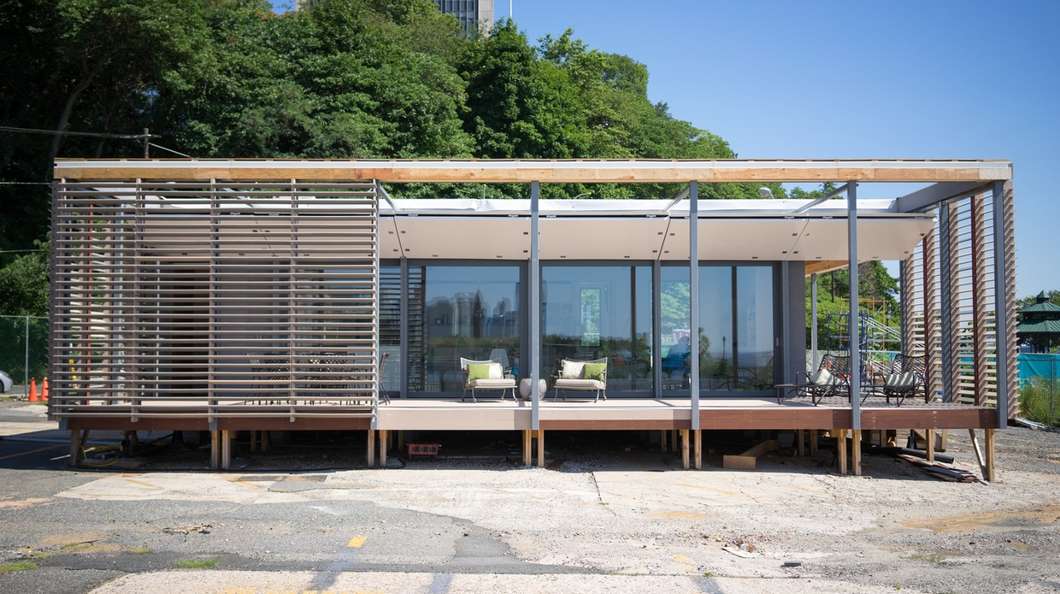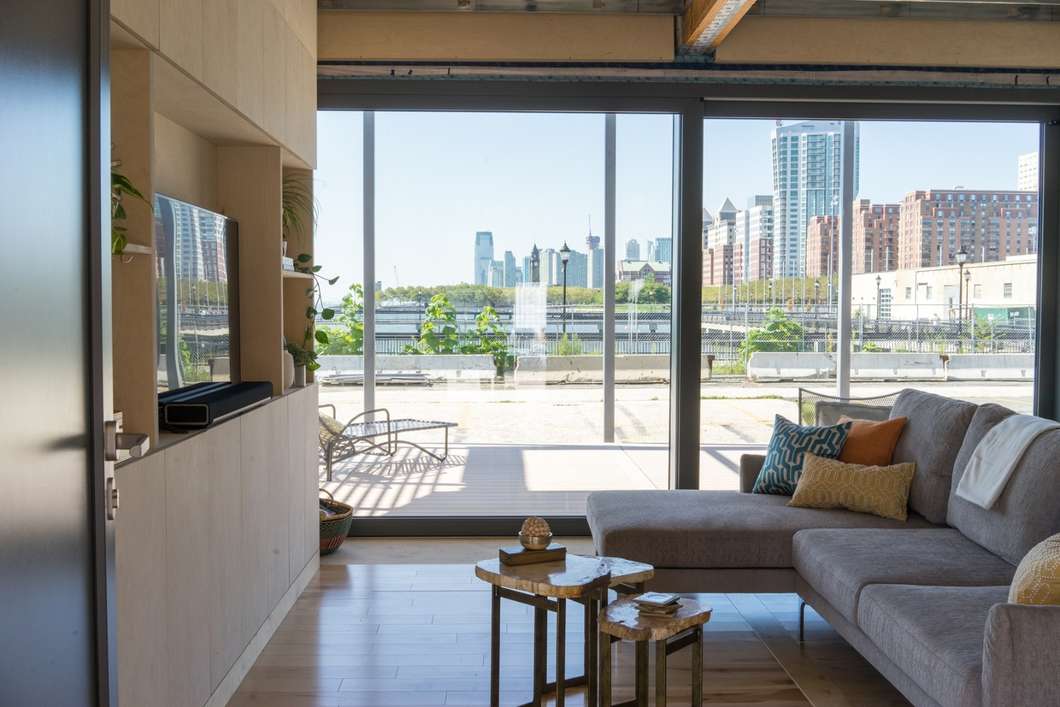Designed to withstand extreme weather conditions and minimize the amount of energy used to generate its own electricity, the Sure House is a tech-savvy and feature-loaded house built in response to Hurricane Sandy that damaged 350,000 homes.

Developed and designed by students from the Stevens Institute of Technology with support from the PSEG foundation, the Sure House merges the words SUstainable and REsilient, and is described by the Stevens team as “a vision of a sustainable and resilient home for the areas at greatest risk due to rising sea-levels and more damaging storms.”
The Sure House is solar-powered, uses 90 percent less energy than traditional homes, is storm proof, and has a “resilient energy hub” that will provide plenty of electricity during a natural disaster. Reported to be a comfortable fit for a working family of four, the house measures 1,000 sq ft (93 sq m) with a modern beach cottage floor plan and structure.

To prevent flooding, the house is elevated on a bed of support and has fiber-composite siding, creating a waterproof shell. It also features storm shutters and a rainscreen system to provide shade from the sun all year-round and prevent the entrance of water or debris during storms.
If flooding does occur, the Sure House features a wooden-truss floor-system, which allows for the movement of air and reduces the chance of rotting or mold damage, and is equipped with water-resistant cork board and vinyl tile flooring.
In order to reduce its use of energy, the house has a highly efficient building envelope, designed to reduce heat loss, an energy recovery ventilation system used to precondition incoming air, and a solar-electric system to heat water.
The home comes with energy-efficient appliances, including a heat pump that heats or cools the space, a large Turbowash machine designed to wash clothes quickly, and a hybrid dryer.
Sure House is the Stevens Institute’s entry into the U.S. Department of Energy Solar Decathlon 2015, a challenge that will take place in California of October 2015, where teams compete to design, build, and operate solar-powered houses that are cost-effective, energy-efficient, and aesthetically-pleasing. It has been in development for two years and will become a public education facility after it competes in the competition.
Source: Gizmag
Advertisement
Learn more about Electronic Products Magazine





